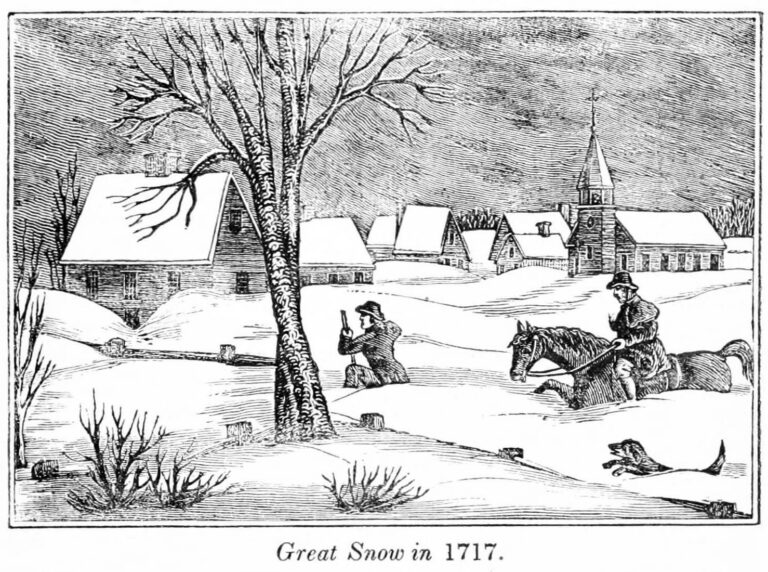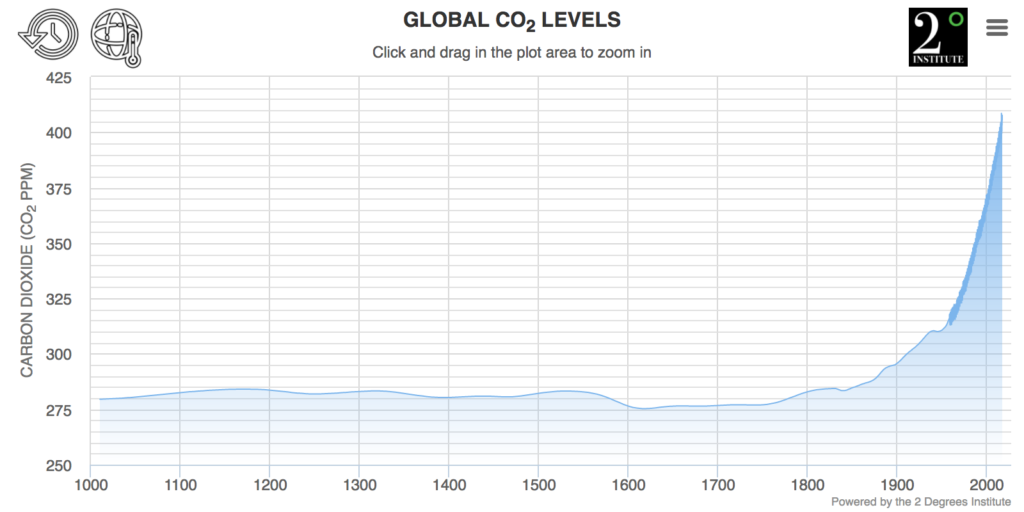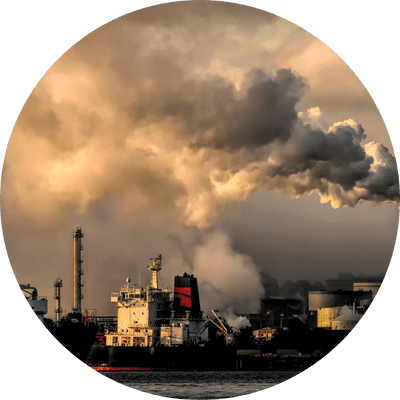Previously, there was also climate change; why is it different now?
Climate Fact
The climate is changing due to human activities; scientists agree on that. However, in the past, the climate also changed when there weren’t even humans walking around on Earth. It might be the most frequently asked climate question in recent years. The mother of all climate questions, and that’s why we’re answering it right here.

There's a kernel of truth in it
Climate specialist Bart Verheggen has often delved into this question and understands very well why it’s asked. “Because there’s also a kernel of truth in it,” he says. “It’s true that there was climate change in the past without human involvement. However, that’s not an argument to claim that it’s not happening now”.
Verheggen gives an example: wildfires. They naturally occurred frequently in the past, even before humans existed. “But if someone now starts a wildfire and gets caught, they can’t defend themselves with the argument that there were wildfires in the past, so it couldn’t have been them.
CO2 is a timeless factor
That may already provide some explanation, but for the real answer, we need to look at the origins of climate change. The answer lies in the amount of CO2 in our atmosphere. Questioner Gert suggests that there was no CO2 emissions in the past. However, that’s not true. Climate changes in the past were often closely tied to CO2 emissions, but these were caused by natural processes.
We humans contribute to CO2 through activities such as burning fossil fuels, but nature itself also releases (and absorbs) the greenhouse gas. For instance, plants absorb CO2, only to release it again when their leaves fall.
The dynamic equilibrium is disturbed
Exchange of CO2 also occurs between the ocean and the atmosphere. CO2 dissolves in water, forming carbonic acid. Verheggen explains, ‘There’s about 50 times as much CO2 in the ocean as in the atmosphere, mostly in various forms of carbonic acid.’
Usually, about as much CO2 is removed from the atmosphere as is emitted, creating what is known as a dynamic equilibrium.
Even in the past, there were occasional changes in this equilibrium. Consider the ice ages, when the CO2 concentration in the atmosphere was much lower than in the intervening periods known as interglacials. But how did that happen? Climate specialist Verheggen says, ‘It’s due to very subtle changes in the Earth’s position relative to the sun. This slightly alters the distribution of sunlight on Earth, leading to ice growth or, conversely, ice melting.
High CO2 levels in the air
During the transition from an ice age to an interglacial period, the water also warms slightly, causing it to absorb less CO2. This results in more CO2 in the atmosphere, leading to further warming of the Earth. It may sound complex, but consider it like a glass of cola in the sun. When the cola is cold, it has fizz (carbonation). If you leave the glass in the sun, the fizz goes away. The same principle applies to an ocean.
Conversely, as it gradually gets colder after about 10,000 years, more CO2 can be absorbed by the ocean. This leads to cooling, a weakening of the greenhouse effect, and even colder temperatures.
In the end, low CO2 levels and abundant ice result in an ice age, a phenomenon that has occurred multiple times, as seen in the graph below (the multiple dips in the graph correspond to ice ages in practice).

If you were to extend the graph, you might conclude that another ice age should be on the horizon. However, Verheggen argues, ‘That’s not going to happen because of us.’ Due to the burning of fossil fuels and deforestation, there is simply too much CO2 in the atmosphere for an ice age to occur. Even if the Earth were to slowly change its orbit and cool down, it wouldn’t happen now due to the high concentration of CO2.”
Ice ages also came and went quickly
At present, there is much more CO2 in the atmosphere than in the 800,000 years preceding this period. Even further back, there were indeed periods with higher CO2 levels in the air. However, during those times, it was also much warmer than it is today, such as the period when T-Rex roamed the Earth tens of millions of years ago.
What is unique about the current era is the speed at which the CO2 concentration is rising. This rate is 100 times faster than during the ice age cycle. ‘The transition from an ice age to an interglacial occurs very quickly in geological terms,’ says Verheggen.
Conclusion
The answer: the greenhouse gas CO2 has always played a significant role in climate changes in the distant past. Due to the massive emissions caused by humans today, we are rapidly disrupting the balance in the atmosphere. The combustion of fossil fuels and deforestation (which releases carbon that was previously stored in trees into the atmosphere as CO2) are the major drivers of current climate change. And for these two aspects, humans are truly responsible.






















